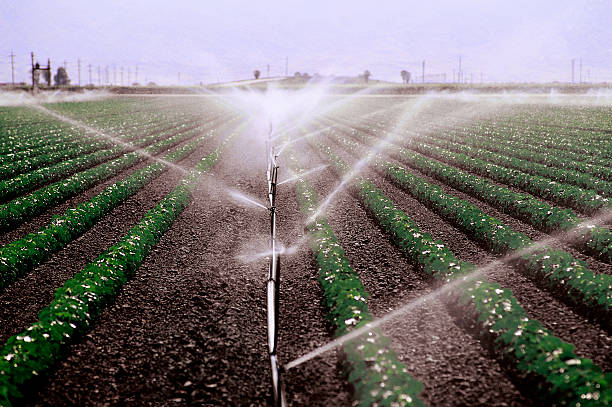Gardening is a exceptional hobby that brings joy and delight. However, it may additionally be time-consuming and exertions-in depth, specially in terms of watering your flowers. A planter water gadget may be a game-changer, helping you store both time and effort. In this blog, we’re going to discover the blessings of a planter water system and manual you through the system of placing one up.
Why You Need a Planter Water System
- Gardening is relaxing, however let’s accept it, watering flora can be a chore. A planter water device simplifies this project. Here’s why you must keep in mind one:
1. Consistent Watering
- Plants want ordinary watering to thrive. A planter water machine guarantees your vegetation get the proper amount of water constantly. This is mainly important when you have a hectic time table or move on vacation.
2. Saves Time
- Manually watering vegetation can take loads of time, specifically if you have a huge garden. A planter water system automates this manner, freeing up some time for different sports.
3. Conserves Water
- Traditional watering techniques can waste numerous water. A planter water gadget can provide water immediately to the roots, minimizing waste and promoting healthier plant life.

Types of Planter Water Systems
- There are numerous sorts of planter water systems to pick from, relying on your needs and price range. Here are some popular alternatives:
1. Drip Irrigation
- Drip irrigation systems supply water without delay to the bottom of every plant thru a community of tubes and emitters. They are green and may be without difficulty custom designed to match any lawn format.
2. Self-Watering Planters
- Self-watering planters have a integrated reservoir that gives a consistent supply of water to the plants. These are ideal for small gardens or indoor flowers.
3. Soaker Hoses
- Soaker hoses are porous and launch water slowly alongside their length. They are terrific for lawn beds and can be laid out to water a couple of flowers right now.
Setting Up a Planter Water System
- Setting up a planter water machine may additionally appear daunting, however it is quite trustworthy. Here’s a step-through-step guide that will help you get started:
Step 1: Plan Your System
- Before you start, take the time to devise your system. Consider the layout of your lawn, the types of flowers you have got, and their water desires. Draw a easy diagram to visualise in which you’ll place the hoses or tubes.
Step 2: Gather Supplies
- Depending at the form of gadget you pick out, you’ll want special components. For a drip irrigation system, you’ll want tubing, emitters, connectors, and a timer. For self-watering planters, you’ll want the planters themselves, which include the reservoir blanketed.
Step 3: Install the System
- Follow the instructions for your chosen device. For drip irrigation, lay out the principle tubing along your lawn beds and fasten the emitters near the bottom of every plant. Connect the tubing to a water source and installation a timer to automate the watering schedule.
- For self-watering planters, fill the reservoir with water and plant your vegetation as ordinary. The reservoir will take care of presenting water to the roots.
Step 4: Test and Adjust
- Once your gadget is mounted, check it to make sure everything is operating nicely. Turn at the water and test for leaks or clogs. Adjust the emitters or hoses to make sure each plant is getting the right amount of water.
Step 5: Maintain Your System
- Regular renovation is key to keeping your planter water device jogging smoothly. Check for leaks, easy out clogs, and regulate the water waft as needed. This will make sure your plants preserve to receive consistent watering.
Tips for Optimizing Your Planter Water System
To get the most out of your planter water machine, hold those suggestions in thoughts:
1. Use Mulch
- Mulch enables retain moisture in the soil, lowering the frequency of watering. It also continues the soil temperature strong and decreases weed growth.
2. Group Plants by way of Water Needs
- Group flora with comparable water wishes together. This makes it easier to tailor your watering time table and guarantees each plant gets the proper quantity of water.
3. Adjust for Weather
- Adjust your watering agenda primarily based at the weather. During warm, dry intervals, your plant life may additionally want extra water. Conversely, throughout wet intervals, you can lessen the frequency of watering.
4. Regularly Check the System
- Regularly inspect your gadget for any troubles. Look for leaks, clogs, or regions in which the water isn’t attaining the plants. Address those troubles directly to ensure your vegetation stay wholesome.
Benefits of Using a Planter Water System
- Using a planter water system gives numerous advantages past just saving time and effort:
1. Healthier Plants
- Consistent watering promotes more healthy root systems and basic plant growth. Plants that receive everyday, ok water are more likely to thrive and bring better yields.
2. Increased Efficiency
- A well-designed water device ensures water is used correctly. By handing over water without delay to the roots, there’s less evaporation and runoff, that is higher for the surroundings.
3. Convenience
- Once installation, a planter water device requires minimal intervention. This is specifically beneficial for busy gardeners or folks that might also travel regularly.
4. Cost Savings
- Although there’s an preliminary investment in setting up a planter water system, it can keep money in the long run by using reducing water waste and probably lowering your water invoice.
Common Challenges and How to Overcome Them
- While planter water structures are normally low-protection, you could encounter some demanding situations. Here’s the way to address common issues:
1. Clogged Emitters or Hoses
- Clogs can occur because of dust or mineral deposits. Regularly flush your device and easy the emitters to save you clogs. Using a filter on the water supply also can help.
2. Uneven Water Distribution
- If some plants are getting too much water while others have become too little, check for kinks or blockages in the tubing. Adjust the emitters or hoses to stability the water distribution.
3. Leaks
- Leaks can waste water and decrease the performance of your device. Inspect the tubing and connectors often and update any damaged parts. Ensure connections are steady to prevent leaks.
Conclusion
A planter water device is a notable investment for any gardener seeking to save effort and time at the same time as keeping a healthful and vibrant garden. By automating the watering procedure, you can ensure your flora get hold of consistent and efficient hydration. Whether you opt for a drip irrigation gadget, self-watering planters, or soaker hoses, the advantages are clean: healthier vegetation, extra green water use, and more free time to experience your lawn. Start making plans your planter water system today and enjoy the difference it can make in your gardening routine.



